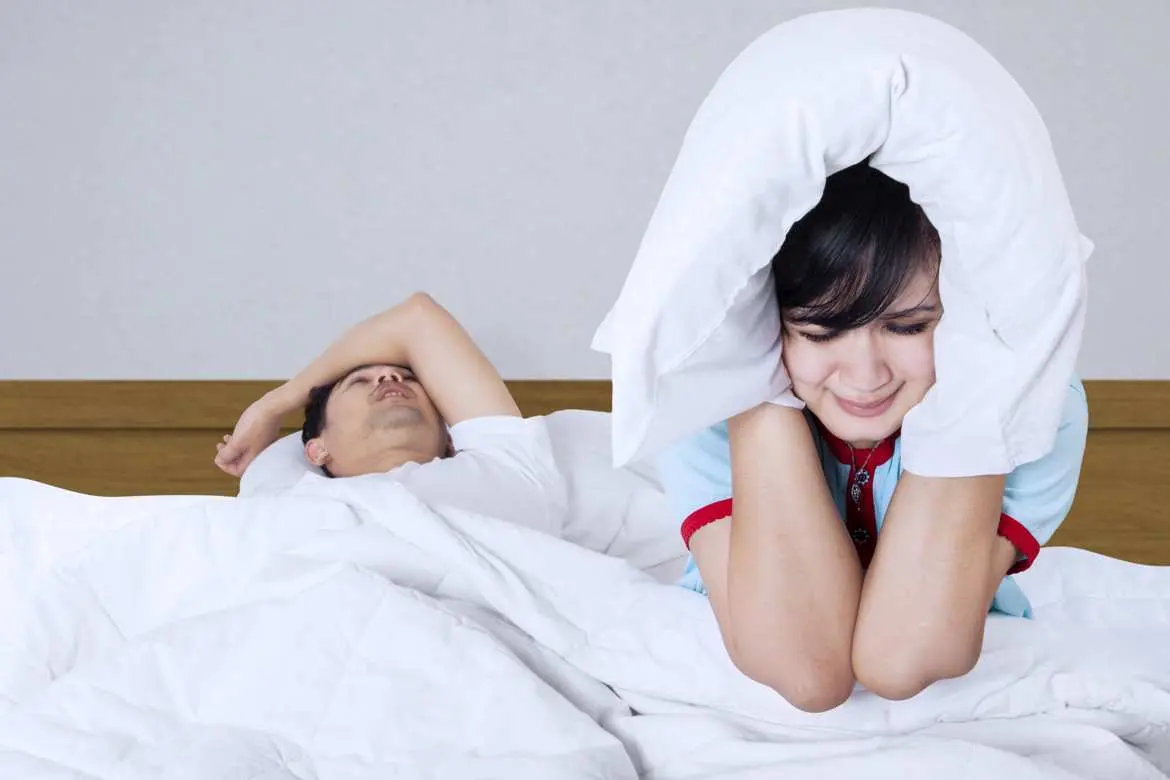Dr Tay Hin Ngan
Otorhinolaryngologist


Source: Shutterstock
Otorhinolaryngologist
There is a myriad of sleep disorders, of which the most recognisable are insomnia and snoring. Almost everyone has experienced it sometimes, but the actual incidence of problematic insomnia is not known. There is little data on snoring as well, but a local study in 1999 found that 24% of local adults snore and 15% have obstructive sleep apnoea. Sleep apnoea is a condition where there is not only snoring, but also blockage of the air passage during sleep, leading to repeated drops in oxygen level and poor sleep quality.
Most causes of insomnia are related to mental and psychological well-being, like anxiety, stress and depression. Sometimes, the causes are physical, like pain from other medical conditions, diseases like an overactive thyroid gland or medications like decongestants that excite the body. Poor sleeping habits like irregular sleep times or stimulating activities before sleep, eg. playing computer games, may also contribute to insomnia.
To improve insomnia, the most important step is to identify the cause, so your doctor will take a detailed history of your pattern of daily activities and sleep. It is a good idea to keep a daily activity and sleep pattern diary over a few weeks, so that this information is available during your consultation. Tests are rarely necessary, but if there is a suspicion of a medical problem like thyroid disease, a blood test may be ordered.
Other problems that keep you awake or wake you up at night like chronic pain, frequent urination, blocked nose etc may require medical opinion from other specialists. A sleep study, either in the hospital or at home may be necessary if other sleep disorders are suspected.
The most important step in treating insomnia is to adopt good sleep habits. These are:
Other behavioural methods like relaxation techniques and minimising stressors are usually helpful as well.
Medications for insomnia include sleeping pills and other medications that induce sleepiness, like anti-histamines. These may be helpful in the beginning, to break the cycle of insomnia and allow a good sleep pattern to be established, but they should not be used long term as there is a potential for addiction.
Snoring is more than a social problem that affects your sleeping partners. It may be a sign of a more serious problem called obstructive sleep apnoea (OSA). This is when the airway blocks up during sleep, leading to repeated drops in oxygen and poor sleep quality.
Research has found a strong link between OSA and cardiovascular diseases like high blood pressure, heart disease and stroke. In fact, for patients with severe OSA, their risk of heart attack and stroke may be higher than 3 times the normal risk.
A study in Singapore found that above 65% of patients suffering from heart attack had undiagnosed moderate to severe OSA. In children, OSA may lead to poorer school performance and difficulty concentrating and learning. It also increases the risk of developing cardiovascular disease and diabetes in future.
You should seek an opinion from an ear-nose-throat (ENT) surgeon or sleep physician if you have the following symptoms on top of snoring:
Your doctor will order a sleep study to determine if OSA is present. This may be performed in the hospital or even at your own home. You will also require a simple outpatient endoscopy (a procedure in which your doctor uses a long, thin tube to observe an internal organ of your body) to look at the points of obstruction. This may occur either in the nose, at the soft palate of the tongue, or at the back of the tongue.
In the nose, blockage may be caused by soft tissue swelling or a bent nasal septum, the divider in the middle. The soft palate and tonsils may cause obstruction at the second level. At the lowest level, the back of the tongue may fall backwards causing obstruction as well.
The sleep study will assess the severity of your OSA. Based on that and the findings on outpatient endoscopy, treatment can be recommended. In children, the first line of treatment for OSA is removal of the tonsils and adenoids and sometimes a reduction of the soft tissue of the nasal.
Treatment for adults is more complicated. For mild OSA, simple procedures to open up the airway, like radiofrequency to reduce soft tissue in the nose and stiffen up the soft palate or oral appliances to bring forward the jaw or retain the tongue may be sufficient.
For moderate to severe OSA, use of a continuous positive airway pressure (CPAP) device gives the best results. It consists of a pump that pressurises air via a mask strapped to your face when sleeping. The problem with CPAP is that most patients are not willing to use it. In that case, surgery is the next best option. It should be tailored to the points of obstruction, which are usually in the nose, at the soft palate and tonsils, and behind the tongue.
One advanced option to treat OSA, where tongue base obstruction is a major contributor, is transoral robotic surgery (TORS), a minimally invasive surgery that uses an advanced surgical robot to enable surgeons to access and operate on the throat or tongue base through the mouth.
TORS may be recommended for select patients with OSA who have specific characteristics, such as airway obstruction from lingual tonsils, a history of failed conservative treatments (such as CPAP), and are otherwise healthy enough to undergo surgery.
During the TORS procedure, the patient is placed under general anaesthesia. The surgeon then uses a robotic-assisted surgical system to access the throat through the mouth, avoiding external incisions.
The robot provides enhanced precision and dexterity, allowing the surgeon to remove excess tissue, including lingual tonsils or tongue muscle, and trim other obstructive structures like the epiglottis, while minimising damage to surrounding tissues.
For more information on which treatment option is best for you, speak to an otorhinolaryngologist or respiratory specialist today.